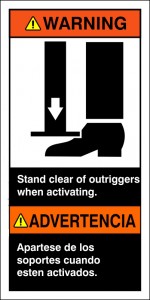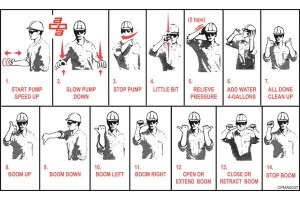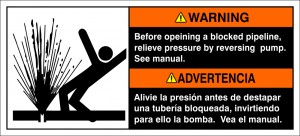Tips to prevent concrete pump accidents: Concrete Pump Truck Safety
Tips to prevent concrete pump accidents. Safety is the most pressing concern of everyone in the concrete pumping industry, At JED Alliance Group we work hard, day in and out, to make sure that customers buying our restored concrete pumps have the necessary information to succeed in their projects safely. Here are our top tips to prevent accidents when operating a trailered concrete pump:
Get Enough Sleep
Much of the responsibility for safety rests with the concrete pump operator. So get enough sleep to be ready for the day’s work. With thousands of pounds of equipment in your control, the consequences of a concrete pump accident can be fatal. Take the time to operate your machine safely.
Remember that drugs, alcohol and concrete pumps, don’t mix. Do not endanger yourself, your co-workers, or client’s property with irresponsible behavior.

Read Operators Manual & Keep It With Your Machine
Do not leave the yard or operate the concrete pump without the machine’s operator manual. Make sure you read and understand it. Operator manuals are issued with each new unit.
Inspect the Delivery Lines
Thoroughly inspect the concrete trailer pump’s delivery hoses and end hoses for abnormal wear. Know the maximum pressure that your machine can exert on the concrete, and be sure that the pipes, hoses, and clamps are capable of handling it.
Be sure the unit is equipped with all the pipes, clamps, gaskets and hoses necessary for the day’s work.

Check Before Towing your Concrete Trailer Pump
Check your tires, tire pressure and brakes. A bald tire could cause a blowout and the loss of control while the towing vehicle.
Be sure that the electrical connection between your truck and the trailer are reliable and that the lights on both units are working properly.
Always use safety chains when towing a concrete trailer pump. And, of course, cross the safety chains when hooking them up so that the trailer tongue will be caught if the trailer becomes unhooked.
When towing a pump, your stopping distance and turning radius are increased dramatically. Be aware of this at all times.

Concrete Truck approach and Outrigger Set-Up
Consider the safe approach and departure of the concrete mixer trucks and adjust your set-up accordingly. Adjusting a trailered concrete pump’s set-up a few degrees could mean the difference between a safe approach and an unsafe approach for the concrete loads. Examples of unsafe approach are too near traffic or too close to an excavation.
Do not start pumping until your outriggers have been correctly positioned and secured, outriggers must be completely extended and secured. Check the soil before jacking the outriggers, use wooden pads if necessary. Never set up near a cliff or excavation, the rule of thumb is for every foot of drop, stay back at least 1 foot (1-1 rule). Be sure the area around the outriggers is clear before and during lowering.
Tips to prevent concrete pump accidents

Arrange Job Site Communications Before Pumping
Never leave the concrete pump unattended when it is running or ready to run. If you must leave the area, leave someone to monitor the machine.
If you are unable to see the point of placement, establish a system of communications with the workmen who will be there. Arrange for radio communications, visual or auditory signal, or a spotter. If a spotter is used, agree on hand signals before beginning the pour.
If spectators will be near the job, cordon off an area where they will be safe.
Never stand between the concrete mixer and the pump.

Monitor Concrete Levels in the Hopper
Do not let the concrete level in the hopper become too low!
If air is sucked into the material cylinders, the pump will compress the air. And compressed air poses a hazard as it is expelled from the hopper or the delivery pipeline. If air is taken into the material cylinders, take the following steps:
- Stop the pump right away.
- Fill the hopper with concrete just below the grate if possible, then pump in reverse for several strokes, this will NOT remove all the air, but it should minimize the amount left in the pipeline.
- Workers standing near the discharge line must be warned and moved away until all the air has been purged.
- Restart the pump and pump forward slowly until all air is removed from the pipeline.
Other reasons for air to be introduced into the pipeline are when initially priming the delivery system, when restarting after moving, or when restarting after adding or removing delivery system.
Pipeline must not be disassembled until it has been completely relieved of air.
We hope you find these Tips to prevent concrete pump accidents useful
What are your tips for avoiding concrete pump accidents? Share below!
